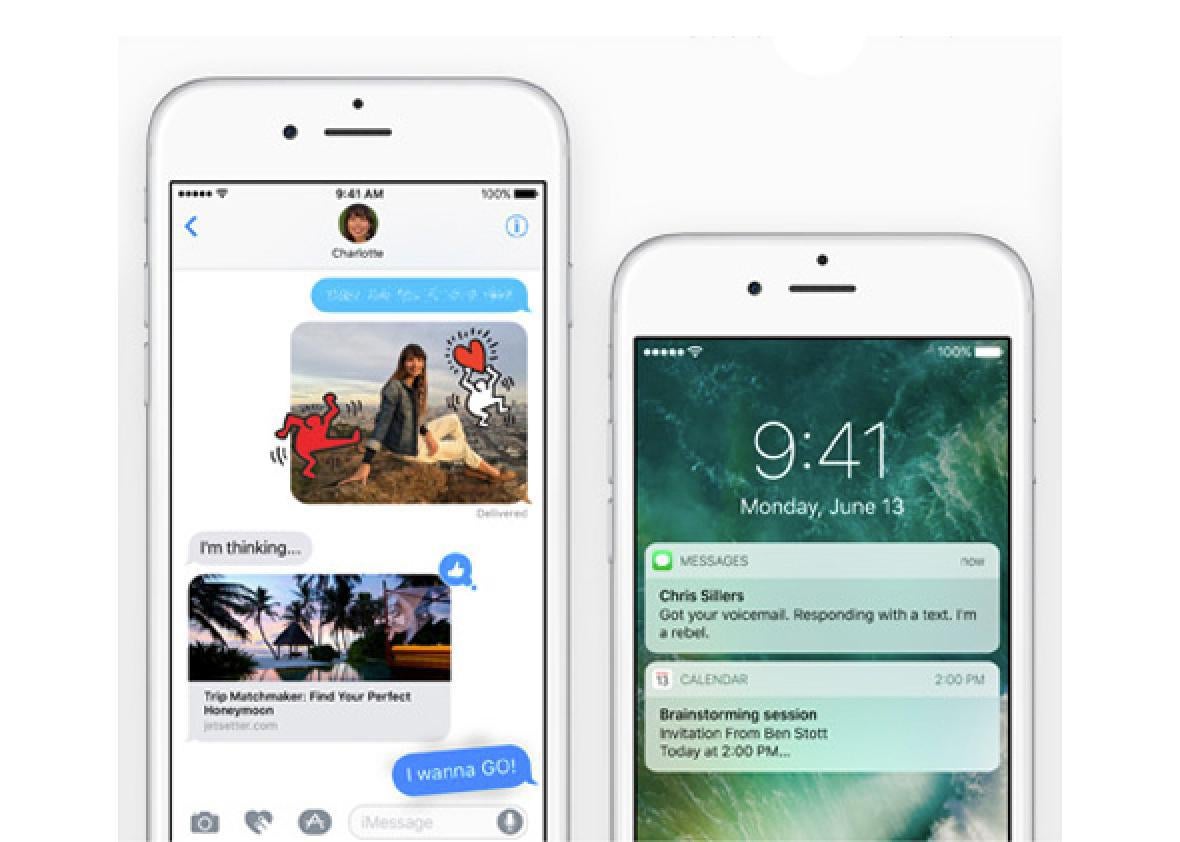Messaging apps are taking over. WhatsApp launched a desktop app last month, Slack is ripe with automated bots, and Google is trying to lock messaging down from every angle possible. People are increasingly thinking of communication platforms as the next generation of operating systems, and some of tech’s true behemoths are betting on it—like Facebook with Messenger. So on the first day of Apple’s developer conference on Monday, the company announced upgrades to its messaging service, iMessage. The company indicates that Apple has big plans for messaging and that it understands the market. But something was missing.
A rumor before the conference had speculated that Apple might bring iMessage to Android, opening up the service to millions of other potential users. The rumor didn’t seem definite, but it was certainly intriguing. Still, Apple didn’t mention anything about it on Monday.
Google almost always offers both Android and iOS versions of its apps, like Hangouts, and the company continued this tradition when it announced new messaging apps last month. Apple, however, has reasons not to give iMessage away on Android—for starters, because it traps users who like the program on the iPhone. If people could use iMessage on Android phones, they might migrate away from the iPhone. Locking people into an ecosystem may work for Apple in general, but messaging apps are finnicky. Choosing one isn’t just about using the software you enjoy, it’s about using the software that your friends use. BlackBerry tried to hold onto users with BlackBerry Messenger, once the coolest messaging app around, but it didn’t work.
Apple needs to think carefully about this. Being compared to Blackberry is never a good look. The company is doing a lot of other things right with iMessage, though, and its new mobile operating system, iOS 10, will be released this fall with a slew of new features for the communications app.
Some changes are aesthetic, like adding the ability to hand-write messages. You’ll be able to choose how your sent message’s text bubbles animate on the other person’s screen (they can just pop up like normal, they can explode onto the screen, or they can sneak in subtly). There are full-screen animations like fireworks or balloons floating by. You’ll be able to react to a message with one of six shortcut emojis—similar to Facebook’s expanded reaction choices. There are big stickers (already popular on lots of chat apps like Hangouts and WeChat) and the ability to draw on videos, just to get up in Snapchat’s grill a little bit. You’ll even be able to use the “invisible ink” feature to send text and photo messages that are blurred out until the recipient swipes away the fog. Prepare to be iMessage rickrolled.
Whether these little features appeal to you or seem like bloat, they show that Apple is trying to load messaging with every expressive tool possible, a sign that the company understands the importance of chat and its spread. It also added a language predictor that notices when you start typing in a different language and automatically switches the keyboard to correspond. Additionally, Apple and Google have been thinking along the same lines, since both have now announced in-message integration with other apps and access to an artificially intelligent personal assistant while messaging. You’ll be able to look up directions, call an Uber, make a payment, or order food, all within iMessage. See? It’s a fledgling operating system.
Google is now offering a confusing array of communication tools, but Apple is keeping iMessage’s branding consistent, something that will help it build momentum. If the two companies combined their approaches, offering a popular messaging app to everyone while maintaining a consistent product for consumers to latch onto, that app would win.
These current decisions about messaging could have major implications for Apple and Google down the road. But there’s one new iMessage feature that could have an even bigger impact on the world. Similar to Venmo’s Emoji Autocomplete, the new “tap to replace emoji” feature automatically highlights words that could be replaced with an emoji. Tap the highlighted words and emojis show up in their place. On Monday, Craig Federighi, Apple’s senior vice president of software engineering, said that thanks to the feature, “Children of tomorrow will have no understanding of the English language!” Too real, Craig.
